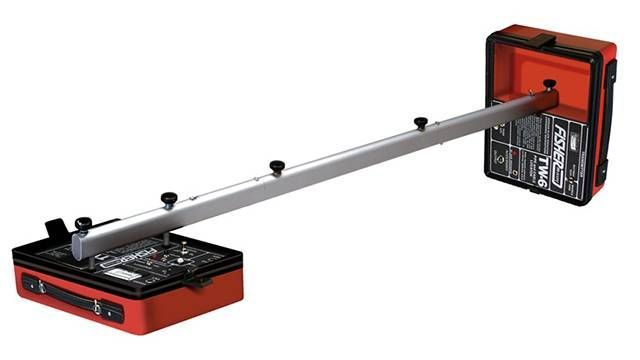Fisher TW-6 Metal Detector
Detecting large metal objects, cables and pipes
The Fisher TW-6 metal detector is based on an invention by Fisher Research Laboratory Inc. dating back to 1931. The TW-6's distinguishing feature is that the transmitting and receiving coils are separate, unlike most other metal detectors where both coils are integrated. This invention makes it possible to locate deep metal objects such as oil tanks, manhole covers, metal pipes, and cables when there is no "starting point" to connect a transmitter to. There are three different ways to locate: Method A: With both the transmitter and receiver attached to the carrying handle, acting as a metal detector. Method B: Place the transmitter above ground over the pipe and use the receiver to pick up and follow the signal. Method C: Once a "starting point" is established, connect the transmitter directly to the cable or pipe and use the receiver to pick up and follow the signal.
Other features
Detection signal by sound and visual (meter) display. Battery check, connection for optional headphones and charger. Power supply by 8x 1.5 Volt AA penlight batteries for transmitter and receiver. Detection depth up to 7 meters for large objects.




